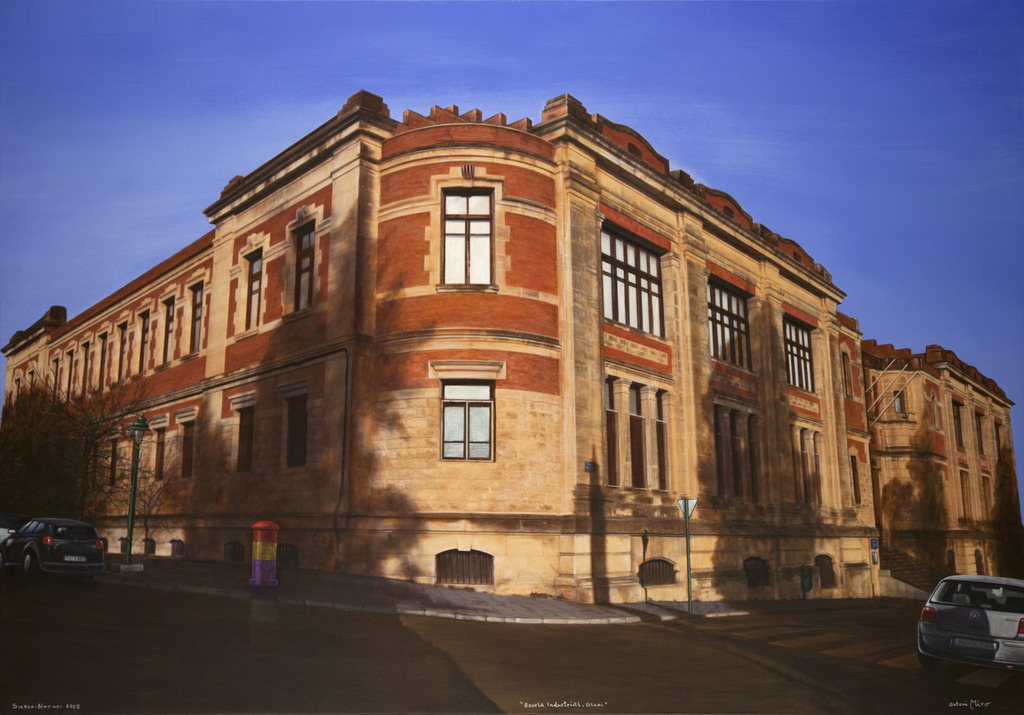Sueco-Noruec (Swedish-Norwegian)
Memory lets us gather threads of past events (especially those we have experienced directly) that we deem valuable and are in a way close for different reasons. Such memories are not always incorporated in society’s cultural heritage but nevertheless are part of a primary collective legacy. In this work, Antoni Miró highlights the solidarity some Scandinavian countries showed towards the Second Republic during the Spanish Civil War.
The war led to a change in the intended use for this building in Alcoi. It occupies a full block of the Tossal District and work began on the building in 1923. War broke out shortly before it opened and what had been planned as an Industrial School became a blood hospital in mid- 1937. Minister Federica Montseny took advantage of the large unused building which was located in a medium-sized city of some industrial capacity and was far from the war front.
The painter wants to acknowledge the importance of this solidary act and he does so by depicting the building as it is today. But in truth, its appearance has changed very little over the intervening eight decades. Under a clear deep blue sky, the edifice is painted from the park that is laid out in front, showing one of its four rounded corners.
The permanence of the building, hinted at by its immutability, coexists with the rest of the elements on the street, all recent, including signposts and cable routings. The parked cars add to this contemporary feeling. Given that the building has lasted, unlike the Second Republic it served, the artist refers to the period by painting the pillar box beside the building with the three colours of the Republican flag, as an homage.
The representation is painted in meticulous detail. The textures of the materials and elements making up the façade are further enhanced by the natural light and shade playing on it. The reflections from the glazed blinds contrast with the rough stone cladding and brickwork.
The perspective reproducing the volume of the building fills almost the whole width of the canvas. The viewpoint is aligned with the diagonal line of the block. There is a certain chromatic affinity between the three colours of the Republican flag and the combination made by the façade (made of brick in the upper part, and of limestone in the lower), and the dark bluish-greys of the street.
In short, what Antoni Miró seeks to recover is a piece of our collective memory, which goes together with the best ideals of co-operation between nations during the worst of times (wars). He achieves this by showing us what remains, in physical terms, though, as we say, the building’s real importance was the social service it provided and the causes that made it possible. Routine and the passage of time gradually erase the witness of all those sterling efforts. That is why we need an approach that rekindles our memory with praiseworthy deeds of our history, like this one.
Santiago Pastor Vila
